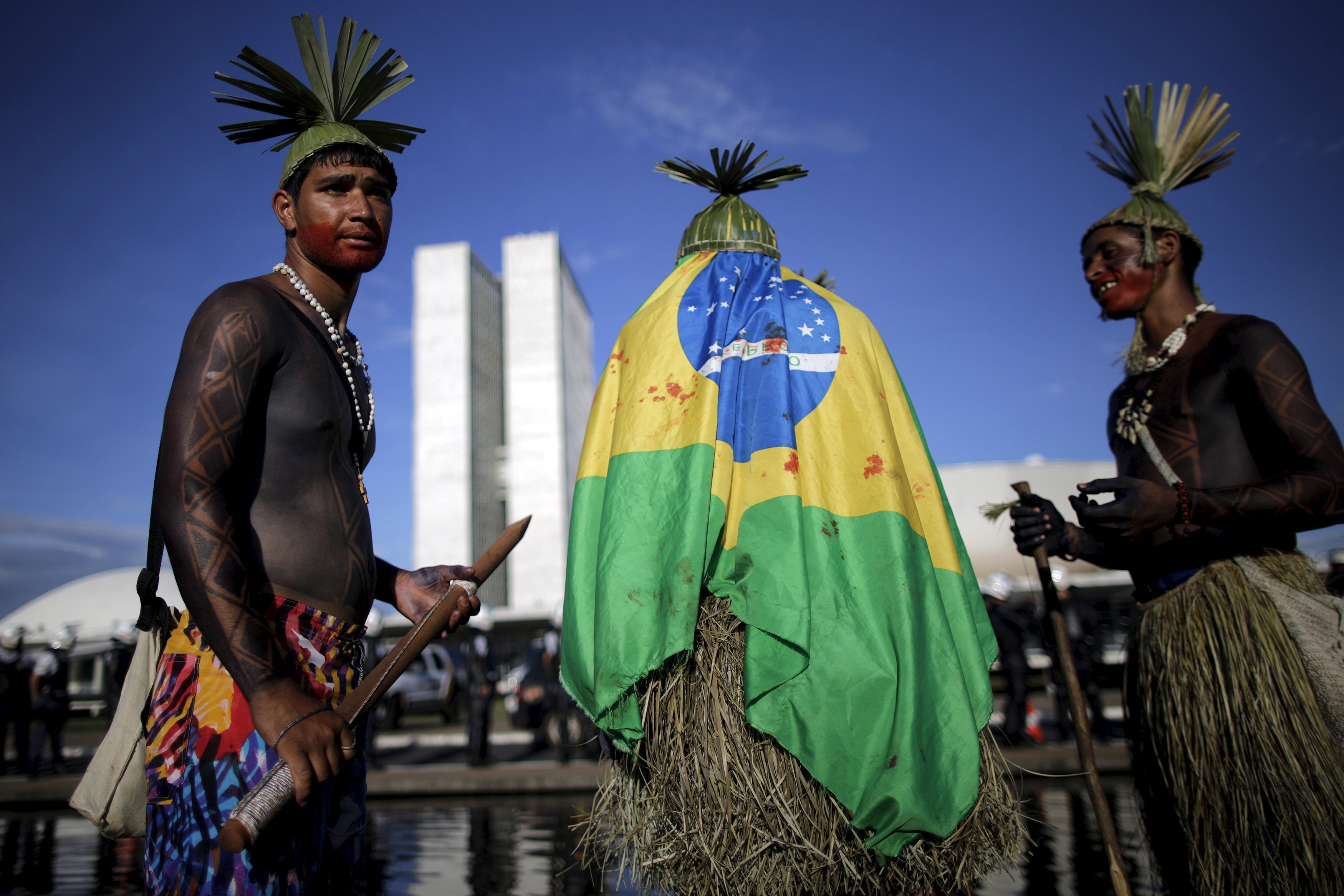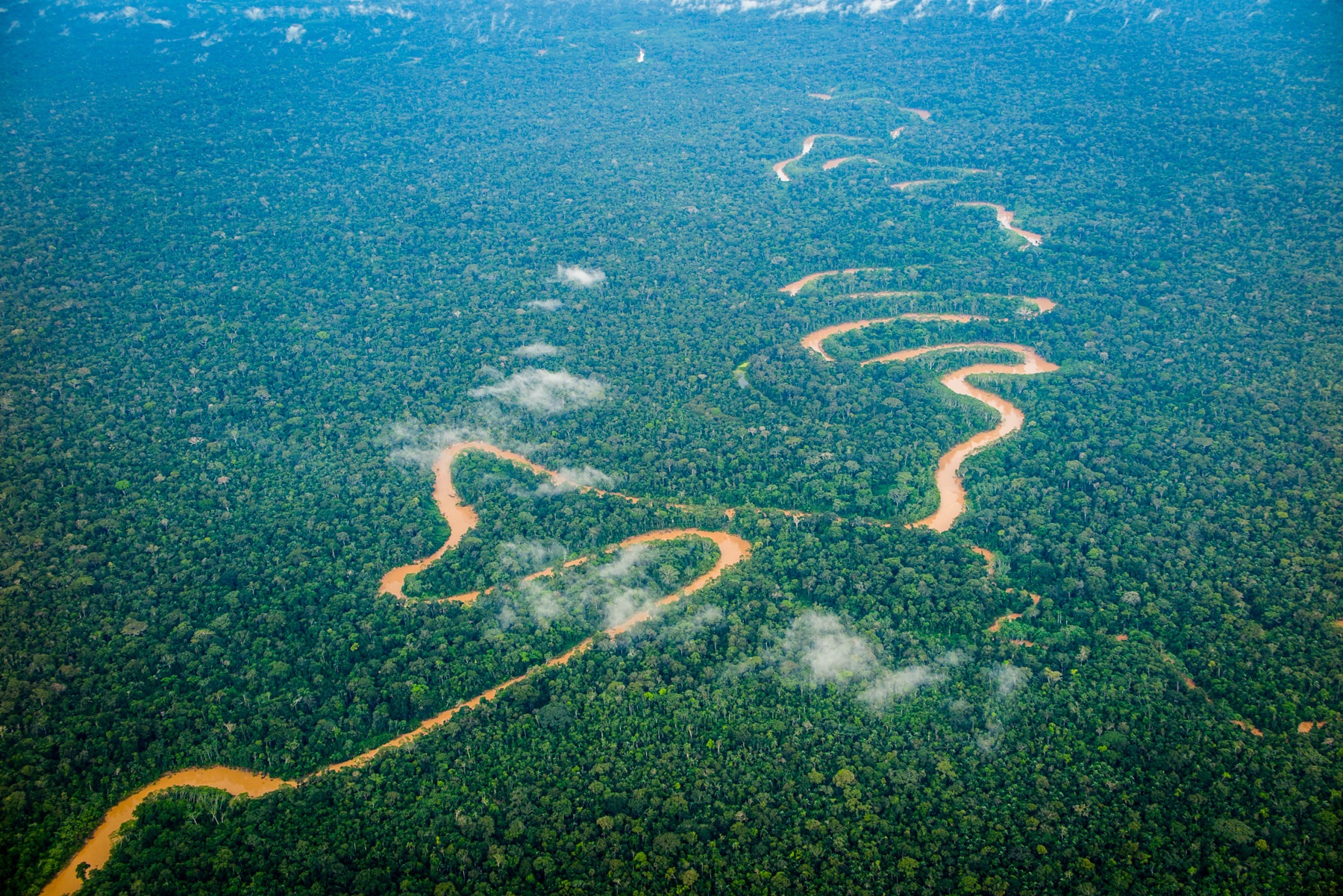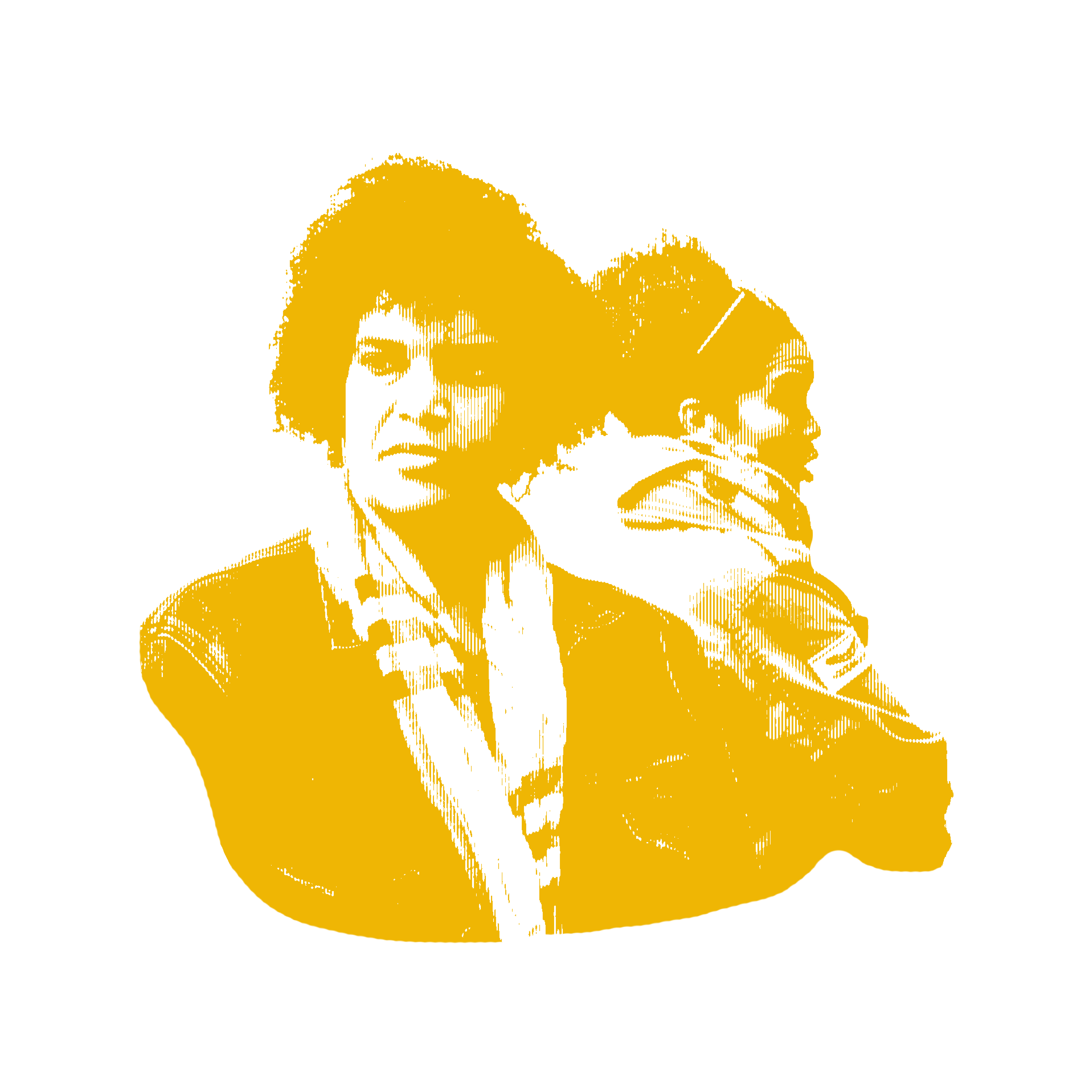
BRASÍLIA—In a spacious, art-filled apartment in Brasília, 75-year-old Sydney Possuelo takes a seat near a large portrait of his younger self. On the canvas, Possuelo stares with calm assurance from the stern of an Amazon riverboat, every bit the famous sertanista, or Amazon frontiersman, that he once was. But on this late February morning, that confidence is nowhere to be seen. Possuelo, now sporting a beard neatly trimmed for city life, seethes with anger over the dangers now threatening the Amazon's isolated tribespeople. "These are the last few groups of humans who are really free," he says. "But we will kill them."
For decades, Possuelo worked for Brazil's National Indian Foundation (FUNAI), the federal agency responsible for the country's indigenous peoples. In the 1970s and 1980s, he and other sertanistas made contact with isolated tribespeople so they could be moved off their land and into settlements. But Possuelo and others grew alarmed by the human toll. The newly contacted had no immunity to diseases carried by outsiders, and the flu virus, he recalls, "was like a suicide bomber," stealing into a village unnoticed. Among some groups, 50% to 90% died (see sidebar). In 1987, Possuelo and fellow sertanistas met to try to stop this devastation.
In Brasília, a futuristic city whose central urban footprint evokes the shape of an airplane, the frontiersmen agreed that contact was inherently damaging to isolated tribespeople. They drew up a new action plan for FUNAI, based solidly on the principle of no contact unless groups faced extinction. They recommended mapping and legally recognizing the territories of isolated groups, and keeping out loggers, miners, and settlers. If contact proved unavoidable, protecting tribespeople's health should be top priority.
The recommendations became FUNAI policy, and a model for other countries where isolated populations are emerging, such as neighboring Peru (see companion story). In remote regions, FUNAI has designated a dozen "protection fronts"—official front lines in the battle to defend isolated groups, each dotted with one or more frontier bases to track tribes and sound the alarm when outsiders invade. In an interview in February, FUNAI's interim president, Flávio Chiarelli, told Science that his agency is "doing great" at protecting the country's isolated tribes.
But some experts say that as the pace of economic activity in the Amazon accelerates, the protection system that was once the envy of South America is falling apart. Brazil has the world's seventh largest economy, with a gross domestic product in 2013 of $2.24 trillion. To fuel this vast economic engine, public and private enterprises are pushing deeper into the Amazon, constructing dams, transmission lines, mines, pipelines, and highways. Meanwhile, drug smugglers cross isolated groups' territories to transport Peruvian cocaine to Brazil, triggering attacks. "There's no part of the Amazon that is not under some kind of pressure," says anthropologist Barbara Arisi of the Federal University of Latin American Integration in Foz do Iguaçu, Brazil.
The rate of contact seems to be rising in both Brazil and Peru. Between 1987 and 2013, FUNAI made contact with five isolated groups. But in the past 18 months alone, three groups initiated contact: the Xinane, the Korubo, and the Awá Guajá. Physician Douglas Rodrigues of the Federal University of São Paulo, a public health specialist who works with indigenous tribes, worries that the recent flurry of contacts is just the beginning. "I fear that we are facing a 'decade of contacts,'" he says. By many accounts, FUNAI—cash-strapped and under pressure from development interests—is not prepared.
DURING THE DRY SEASON in the Amazon last summer, a handful of robust young men emerged from the forest along the Envira River, near the Peru border. They wore thin belts around their waists, had their hair styled in a bowl cut, and carried long bows. They were from an isolated tribe that FUNAI calls the Xinane people, and according to what the tribespeople later told government interpreters, they had survived a violent attack by nonindigenous men along the Envira River in eastern Peru, a border region favored by cocaine smugglers. FUNAI had had a base nearby on the Xinane River, but abandoned it in 2011 after heavily armed drug traffickers surrounded it.
As the dry season progressed last summer, the Xinane moved eastward through the forest to a small indigenous settlement known as Simpatia, where at least 70 contacted Ashaninka people lived. For several days, the young hunters watched and waited in the dense vegetation around the village, calling to one another with bird cries and animal sounds. The Ashaninka feared an attack.
Then on 13 June, Simpatia's schoolteacher radioed FUNAI for help. Four young Xinane men had entered the village, noted a later medical report, and taken machetes, metal pots, and clothing, the latter a potential source of disease transmission. Frightened, the Ashaninka hid in their houses.
The Xinane were not unknown to FUNAI. Since 2008, researchers had been studying the group and tracking their movements from FUNAI's headquarters in a sleek glass office tower in Brasília. Last February, seated at a large conference table there, Leonardo Lenin thumbed through photos taken by FUNAI field teams, which had found vestiges of Xinane camps since at least 2005. Dark-haired and intense, with an urgent way of speaking, Lenin is responsible for the FUNAI division that gathers data on Brazil's isolated groups and tries to protect them.
To date, Lenin explains, FUNAI has confirmed the existence of 26 isolated groups in Brazil, with the greatest concentration located along the Peruvian border. The agency's records suggest that up to 78 additional groups may be in hiding or on the run.
Gathering enough evidence to confirm a suspected group can take years, Lenin says. FUNAI researchers scour historical accounts and examine anthropological records on the languages and material culture of nearby contacted groups. They also compile a picture of nearby development projects and any illegal activities, such as the drug trafficking that threatened the Xinane.
In the field, FUNAI workers interview local people and may send a team into the forest. Skirting areas likely to be seasonally occupied, the teams hunt for abandoned camps, documenting huts and houses, as well as discarded tools and weapons, food remains, and raw materials. Team members are instructed to leave everything in situ, to win the trust of the isolated groups. "They will know that someone was there, but they will also know that it was a group that doesn't want to harm them," Lenin says.
Back in the FUNAI offices, Lenin and his colleagues analyze the findings and begin mapping territories and estimating populations. "It is an archaeology of the living," Lenin says, adding that even small finds can disclose vital information.
He holds up a photograph of a child's reed toy, found in a hideout used by the Kawahiva, an isolated group in the state of Mato Grosso who are on the run from loggers and farmers. "It was quite emotional to find this," Lenin says. Tribespeople who are constantly evading hostile outsiders often seem to stop having children, a sure path to extinction. The small woven toy, however, indicates that Kawahiva mothers have not yet reached that point.
To monitor isolated populations over time, FUNAI researchers conduct regular flyovers, taking aerial photos of houses and fields, estimating populations, and noting hair styles and patterns of body paint. But flyovers are expensive, so researchers increasingly gather information from remote sensing imagery.
For example, in a paper published in Royal Society Open Science in November 2014, scientists led by anthropologist Robert Walker of the University of Missouri, Columbia, used satellite images to survey isolated groups in Brazil. The researchers searched for thatched-roof houses and gardens along the Brazil-Peru border where FUNAI had confirmed the existence of three isolated groups, including the Xinane, through fieldwork and overflights. They found at least five villages and calculated their areal extent.
Using population estimates from FUNAI's published data, they found that the isolated villages had far greater population densities than did the contacted villages—nine people per square hectare versus just 0.7 people in the contacted settlements. Isolated tribespeople may not clear spacious areas because they lack steel tools such as machetes and axes, Walker says—or because of pressure from hostile outsiders. "We need to track these populations over time," Walker says. "They are really fragile groups on the cusp of extinction."
FUNAI's official policies are directed toward preventing rather than managing contact, and neither the agency nor Brazil's Ministry of Health has an official contingency plan for how to protect isolated people's health should contact occur. But contact was exactly what the Xinane seemed to be seeking.
BACK IN SIMPATIA last June, the Ashaninka were growing increasingly anxious as the Xinane calls resounded through the forest. Finally, on 26 June, a small FUNAI team arrived to take charge of the situation, including José Carlos Meirelles, a retired sertanista who advised the state of Acre on indigenous affairs. The Ashaninka knew Meirelles well. The gaunt 66-year-old had supervised FUNAI's protection front in the region for more than 2 decades and had set up the Xinane base.
In all likelihood, the young Xinane men knew Meirelles, too. Anthropologists working in recently settled communities have collected accounts showing that tribespeople carefully observed nonindigenous communities before they made contact, for example learning people's names.
FUNAI researchers had deduced that the Xinane spoke a language in the Panoan family, likely a language closely related to Yaminawa. So Meirelles's team included two Yaminawa interpreters.
Three days after Meirelles arrived, seven Xinane appeared on the opposite riverbank with machetes, arrows, and one rifle in hand. Eventually some waded across the river, and this time the nervous Ashaninka welcomed them with bananas, coconuts, and clothing. The young Xinane men said that they had come from a village deep in the forest, where as many as 60 people lived. They spent several hours in Simpatia that day, walking about and occasionally pilfering goods. It was their first official contact with the Brazilian government.
The next day, however, the situation took a sudden turn for the worse. FUNAI team members noticed that some Xinane were coughing and looked ill. Alarmed, the field team informed FUNAI and Ministry of Health officials in Brasília.
An untreated disease can kill up to 90% of an isolated population, and such illnesses demand a fast response, Lenin says. "We're talking almost a process of extermination of a group," he later told a public hearing in Brasília on public policies and land conflicts concerning indigenous groups.
But while FUNAI and Ministry of Health officials tried to organize and fly in a medical team, the Xinane melted back into the forest, raising concerns that they would carry disease back to their home village. It was not until 6 July that the Ministry of Health flew in the first physician, Rodrigues. He managed to find and examine three tribesmen on 8 July. Each had a fever and an acute respiratory infection. Concerned about preventing secondary infections such as pneumonia, Rodrigues and a small team began treating the Xinane with fluids, antibiotics, and drugs to lower their fevers.
The FUNAI and Ministry of Health workers then located all seven Xinane and convinced them to move upriver with Rodrigues and colleagues to the abandoned Xinane base. There, the young men would be less likely to catch additional diseases or to return to their home village while contagious.
Eight days later, the Xinane had recovered fully. Through an interpreter, Rodrigues asked them to return to the base in a month with their families. On 26 July, 34 Xinane men, women, and children began trickling into the base to receive immunizations for influenza, chickenpox, and other infectious diseases. Today, Lenin reports, the Xinane are doing well and the Xinane base remains open. "They know that if there is any situation of health or territorial invasion, the team is there to help them," he says.
So far, contact has not meant death for the Xinane. But some observers think that last summer's achievement was mostly a matter of luck. In an online report, physician Rodrigues notes that the virus contracted by the Xinane happened to be relatively mild, possibly a rhinovirus or adenovirus; a more serious virus such as influenza might have killed many. And some critics think FUNAI and the Ministry of Health moved much too slowly when disease broke out. The Xinane, Arisi says, "did not receive prompt and proper emergency treatment."
In light of these experiences, Rodrigues thinks that FUNAI and the Ministry of Health need contingency plans that can be activated immediately, with specially trained health teams and stockpiles of vaccines and medicines available on short notice, as well as helicopters to ferry them to inaccessible corners of the Amazon. He adds that the Brazilian government needs to provide better health care in remote indigenous villages such as Simpatia, to help the villagers as well as to reduce the likelihood of disease transmission to isolated groups.
Lenin himself conceded last August in the public hearing in Brasília that more funds and planning are required to protect isolated groups. "Now, our concern is to have … teams ready to make this work in relation to health," Lenin said. "Either we, in fact, do a competent, skilled intervention, or we will be talking about repeating the histories of contacts, where the mortality of indigenous groups was very high."
SITTING IN A shady tropical garden in one of Brasília's middle-class neighborhoods, Antenor Vaz frowns as he considers the tale of the Xinane. A crisp, precise man in his 60s who once trained as a physicist, Vaz is the person who systematized FUNAI's procedures for protecting isolated people after the agency moved to a no-contact policy in 1988. Since leaving the agency in 2013, Vaz has monitored and critiqued its activities, hunting down obscure FUNAI reports and presentations online and publishing his findings.
FUNAI, he says, lacks the funds and human resources it needs. In 2014, the Brazilian government approved just 2.77 million reais ($1.15 million) for finding and protecting isolated groups, 20% of what FUNAI requested; this year, the government again provisionally approved 2.77 million reais, less than 15% of the amount FUNAI requested, according to documents presented at the 2014 public hearing.
FUNAI officials stated in 2014 that they needed 30 staffed frontier posts, each outfitted with communications equipment and transportation. But according to a document presented at the hearing, they had just 15 posts operating in 2014, suggesting that their front lines are operating at half strength.
Vaz notes that most of FUNAI's protection fronts now lack the specialized field teams needed to find isolated groups and map territories. At the 2014 public hearing, FUNAI officials reported that they needed 14 specialized field teams; at present the agency has two. Vaz is furious. "Why do we have protection bases being closed?" he asks. "Why are there protection fronts that are no longer able to implement the procedures for protection? There is something wrong."
He thinks the problem boils down to a highly coveted commodity in Brazil today: land. The data gathered by FUNAI's specialist field teams lay the groundwork for legally demarcating land for the sole use of isolated indigenous groups. Once the land is protected, the Brazilian government can no longer auction it off to public and private development enterprises.
Vaz digs out a chart published by the Brazilian nonprofit Povos Indígenas no Brasil, which itemizes indigenous land demarcation over the past 2 decades. Between 1995 and 2002, the government of Fernando Henrique Cardoso demarcated and ratified 118 applications for indigenous land. From 2003 to 2010, Luiz Inácio Lula da Silva's government ratified another 81 applications. But from 2011 to 2015, Dilma Rousseff's government ratified just 11 applications, and only one since 2013; that application was signed on 29 May 2015. Several demarcation documents "are sitting on the desk of the minister of justice, and he is not signing them," Vaz says.
Vaz contends that the current government is demarcating very little land for indigenous groups and has largely abandoned its responsibilities to them, placing their lives in danger, primarily because it "sees the Indians as hampering the agricultural business, hampering the expansion of mining, and hampering the extraction of natural resources."
João Paulo Gomes, a representative for the Secretariat for Social Communication of the Presidency of Brazil, does not dispute Vaz's numbers. "It is natural that the number of demarcations should decrease over time as the demand for them is met," he wrote by e-mail. Most of the indigenous lands now awaiting ratification, he adds, "are concentrated in the center-south and northeast regions of Brazil," where there is still major social conflict over the demarcation of indigenous lands.
Gomes also dismisses charges that President Rousseff and her government favor economic development on the territories of isolated tribes. The Ministry of Justice is now using legal mediation measures to resolve disputes over land between indigenous communities and rural producers, he says. The government "is keenly interested in bringing the conflicts in indigenous lands to an end," he says.
In his sunlit apartment, Sydney Possuelo agrees with Vaz's contention that the current government has reneged on its responsibilities to isolated peoples. The legendary protection system that Possuelo helped build is crumbling, as abandoned protection bases molder in the forest. The once efficient system of radio communication between FUNAI riverboats and bases is falling apart. The isolated people who once preserved traditional knowledge of Amazonian plants as well as a rich diversity of cultures and languages face new threats. And in their glass towers in Brasília, federal officials are veering dangerously close to repeating the mistakes of the past, Possuelo says.
"FUNAI is dead," he says. "But nobody told it, and nobody held a funeral."

Education Resource
Meet the Journalist: Heather Pringle
Heather Pringle discusses her and Andrew Lawler's reporting on the emergence of "isolated tribes" in...






